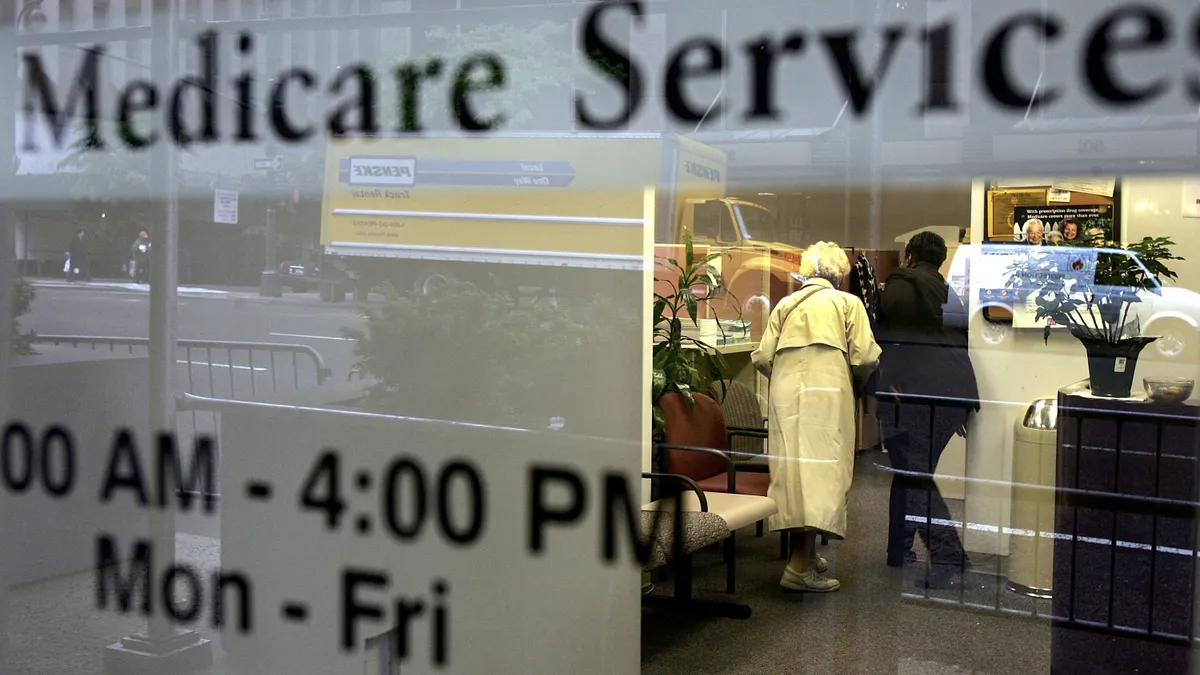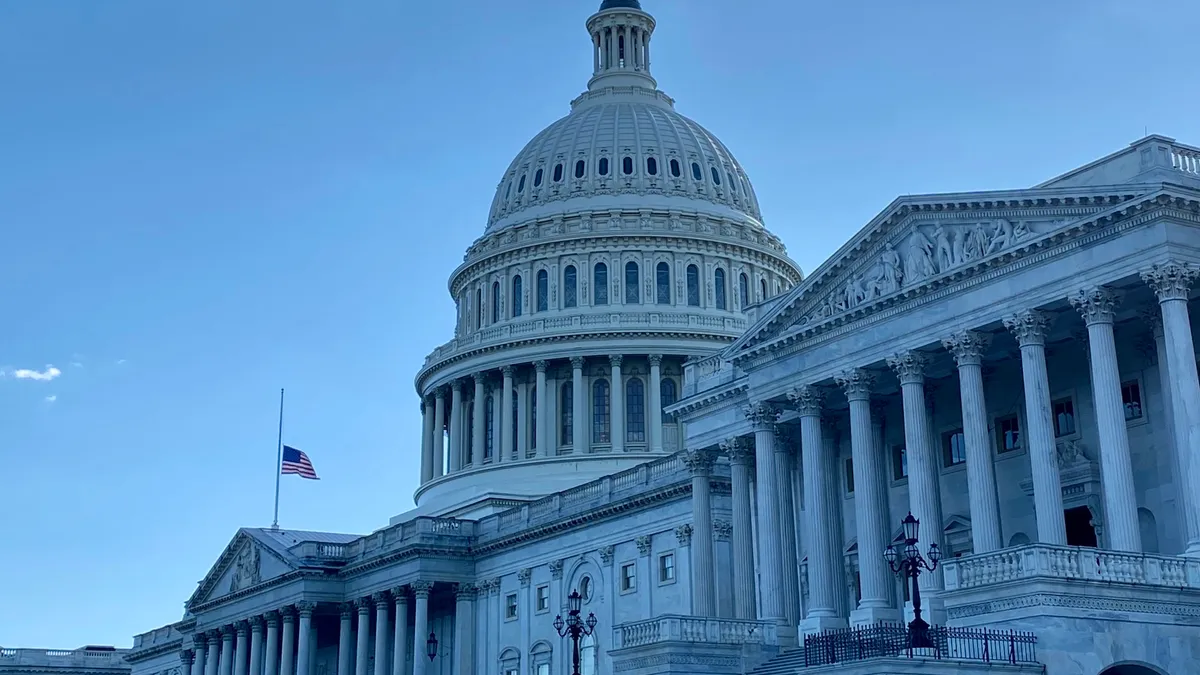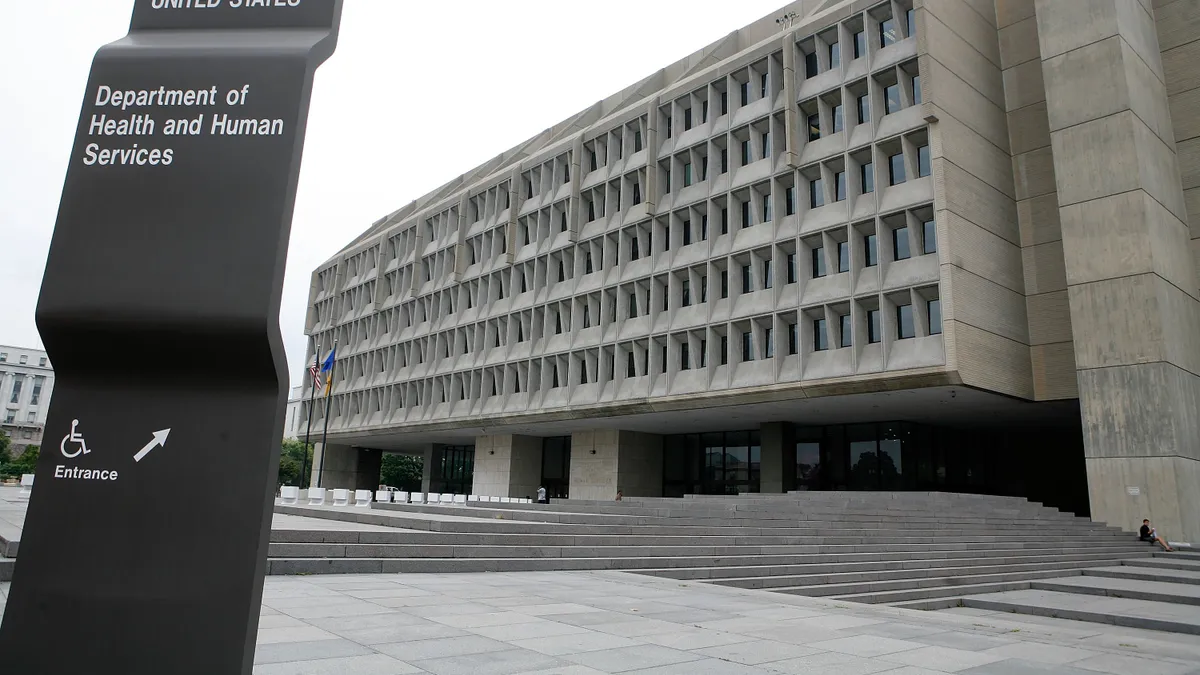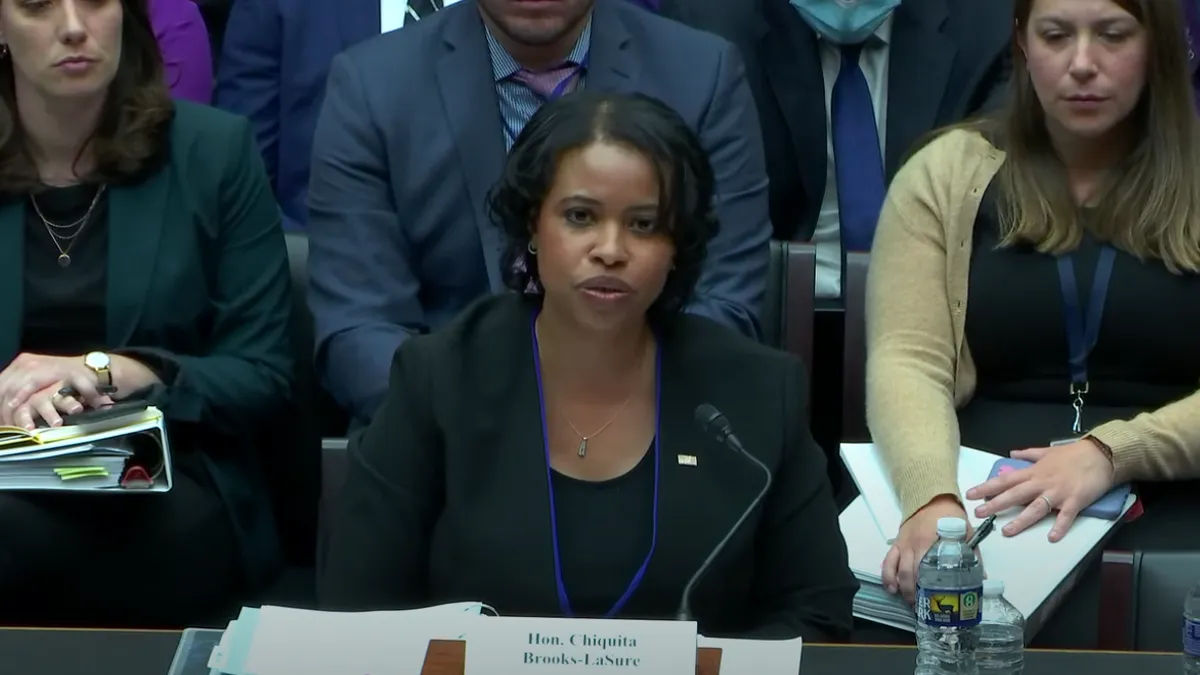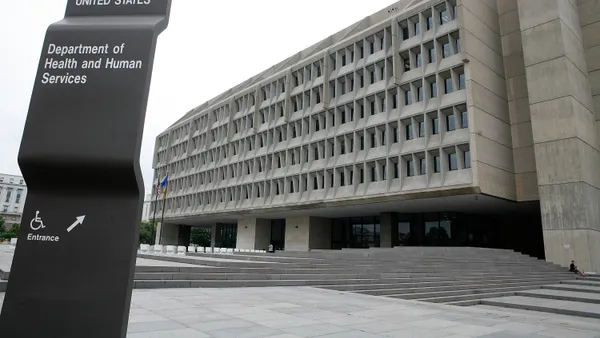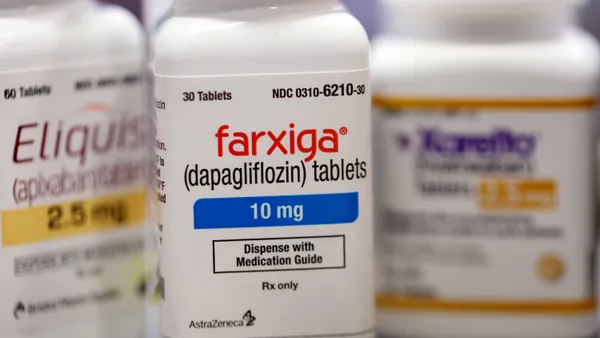Humana and CVS, two of the largest Medicare Advantage insurers in the country, are poised to seriously downgrade their plan benefits and geographic presence next year as they chase profits in the privately run Medicare program.
As a result, hundreds of thousands of Medicare Advantage seniors — and the billions in revenue they represent — could come up for grabs, representing a significant opportunity for insurers looking to take on more members despite ongoing challenges in MA.
The size of the turnover depends on a number of factors. Deciding which benefits to cut versus keep is a tough calculus, and there are guardrails from the federal government limiting cutbacks, experts say.
Those decisions have been made — bids were due to the CMS on Monday. However, it will be months before the industry knows how much turbulence Humana and CVS might cause in their drive to bolster profits next year, and which insurers might benefit.
Of the national payers, market leader UnitedHealth may be best situated to pick up switching seniors, solidifying its dominance in MA, experts say.
“I think there will be a huge shakeup,” Alexis Levy, a senior partner at health consultancy Chartis’ payer advisory practice, said.
MA’s dimming profits
Many payers are struggling financially as MA headwinds overturn years of comfortable margins.
In recent years, the insurance program has grown at a rapid annual clip of 9% to 10%, fueled by the booming senior population, generous taxpayer funding and heavy insurer investments in marketing and benefits. The number of people in an MA plan has tripled since 2010, to 33.4 million individuals — more than half of the entire Medicare population, according to government data.
That growth has been a font of profits for insurers, which are paid a per-member, per-month fee based on their beneficiaries’ health needs. MA is an unusually lucrative program: Gross margins, which can serve as a proxy for profitability, are substantially higher in MA than other insurance markets.
However, the boom times of MA appear to be in the rearview. Last year, the program grew about 6% — the lowest level since 2016, according to Gary Taylor, the managing director of equity research at investment bank TD Cowen.
As growth slows, a tsunami of other pressures are converging on insurers. Seniors are using more medical services than insurers previously expected, increasing spending. In addition, the Biden administration has tweaked MA to tamp down on what regulators view as runaway reimbursement.

Along with decreasing payment rates for 2025, the CMS has revised how plans adjust for members’ risk and how quality or “star” ratings are calculated in the program. All have major ramifications on insurers’ ability to extract profits from MA.
“Medicare Advantage plans are kind of facing a perfect storm all of a sudden,” Levy said.
Flagging operations at Humana, CVS
All major payers with MA businesses informed investors of utilization and regulatory pressures in the first quarter. But Humana and CVS have been especially affected by this “storm.”
CVS expanded its supplemental benefits heavily last year. As a result, its insurance division Aetna added more members for 2024 than any other payer, according to a Chartis analysis. Now, Aetna is being slammed with high medical costs for those members, at the same time a significant star ratings cut lowers its MA bonus payments.
As a result, Aetna’s operating income plummeted 70% year over year to $428 million in the first quarter. Currently, analysts estimate Aetna’s MA business is running at margins of -3% to -4%, well below target margins of 4% to 5%.
Aetna blamed MA after posting the lowest income and margin of its peers
Similarly, Humana’s insurance segment reported operating income of $898 million in the first quarter, down 32% year over year. The company’s MA business is currently running at flat to slightly profitable margins, CFO Susan Diamond told investors late April. Like CVS, Humana executives blamed higher utilization compounded by flat government reimbursement for its performance.
Following the quarter, CVS slashed its earnings expectations for 2024, while Humana pulled its profit outlook for 2025 entirely.
Executives at Humana and CVS reassured Wall Street they will take substantial pricing actions to resuscitate their MA businesses for 2025. Yet such actions come with a potential downside: members moving to other, more generous plans.
“Could we lose up to 10% of our existing Medicare members next year? That’s entirely possible. And that’s okay because we need to get this business back on track,” CVS CFO Tom Cowhey said at the Bank of America healthcare conference last month.
Cowhey’s 10% ceiling for losses translates to upwards of 400,000 lives, based on CVS’ current MA membership.
Similarly, Humana will have to make “larger benefit reductions” to boost margins than the payer had already planned, Diamond said during the earnings call.
“We are anticipating that membership declines for 2025, largely because we do intend to exit certain plans in counties. Whether that is incrementally larger or smaller ... will be very dependent on what we see across the competitive landscape,” Diamond said.
Humana has not provided specific guidance for expected losses, but it’s likely in the range of 5%, according to analysts. That’s roughly 300,000 lives.
As a result, market watchers expect to see significant upheaval for 2025 as seniors switch between MA plans and potentially between carriers.
Benefits on the chopping block
How many ex-Humana and CVS members eventually come up for grabs depends on how much the insurers reduce their geographic footprint and change up benefits.
A number of factors influence what counties payers might look to exit, including a plan’s profitability, star ratings scores, size, the cost of its members’ medical care and any competitors in a given market, according to experts.
Plans also consider the quality of their provider network, including whether they own clinics in a certain geography.
It’s unlikely payers with medical networks — like Humana with CenterWell, CVS with Oak Street Health or UnitedHealth with Optum — will exit counties where they operate clinics, as they tend to have better visibility into costs and more influence into member outcomes, Taylor said.
Similarly, benefit reduction decisions are a balancing act between maintaining benefits that are important to seniors and removing those that don’t contribute to lower costs, coverage quality and member satisfaction, experts say.
Plans generally want to keep medical benefits like deductible and maximum out-of-pocket cost competitive, since seniors are very cost-conscious in those areas, according to Chartis’ Levy.
Instead, insurers are likely to cut the supplemental benefits that are unique to MA and a huge draw for seniors. Those benefits go well beyond what can be offered in traditional Medicare, and include zero premiums, dental coverage, gym memberships and debit cards for over-the-counter medical supplies.
"The bigger conversations right now are certainly on the supplemental side."

Alexis Levy
Senior partner at HealthScape Advisors, Chartis’ payer advisory practice
Insurers have expanded those benefits heavily in past years to attract seniors to their plans. The number of plans offering new supplemental benefits increased more than three-fold between 2020 and 2023, according to ATI Advisory. That makes them a natural area to pare back, according to experts.
“The bigger conversations right now are certainly on the supplemental side,” Chartis’ Levy said.
In particular, enhanced dental benefits is one area that could be reduced, along with more “eccentric” offerings like dollars for home improvement or veterinary care for emotional support animals, according to Taylor.
Plans could also tweak aspects of the medical benefit, like inching co-pays up for non-primary care or increasing seniors’ maximum out-of-pocket burden, Taylor said.
The TBC threshold
Yet insurers don’t have free reign to slash benefits willy-nilly to improve their margins. They’re hamstrung by a metric called total beneficiary cost, or TBC, which the CMS uses to evaluate changes in benefits from one year to the next.
The CMS limits how much TBC can change each year in a bid to limit cost increases on enrollees, according to Matt Fiedler, a senior fellow at the Center on Health Policy at Brookings.
That restriction limits payers’ ability to expand margins, particularly if cost trend continues to run high.
For 2025, TBC is capped at $40 per-member, per-month, with some adjustments depending on the particulars of a plan.
The game is how to approach the TBC threshold without passing it, according to experts. One strategy is cutting benefits that don’t count toward the limit, like over-the-counter and flex cards. Plans could also restrict benefits in dual-eligible special needs (D-SNP) plans for beneficiaries in both Medicare and Medicaid, or group MA plans offered by employers to their retirees, as TBC doesn’t apply to either type of coverage.
However, some of the areas where TBC doesn’t apply are some of the most protected, according to Taylor. Over-the-counter and flex cards — essentially prepaid debit cards — are highly valued by seniors, and changes to those benefits are very noticeable. By comparison, if insurers hike co-pay requirements for specialty care, seniors may not notice, he said.
"All else equal, you’ll use TBC on everything that’s not visible to a senior."

Gary Taylor
Managing director of equity research, TD Cowen
In addition, plans don’t want to reduce benefits and chance losing members in D-SNP plans, Taylor said. That’s because individuals in special needs plans have risk scores almost two times higher than that of the average MA member, resulting in significantly higher payments from the government.
In 2021, D-SNP plans had margins of 6.4%, compared to the MA average of 2.2%, according to congressional advisory group MedPAC.
“All else equal, you’ll use TBC on everything that’s not visible to a senior,” Taylor said. And “if I have to shed individual MA or D-SNP, I’d rather shed individual MA.”
Potential opportunity
Humana and CVS are only so responsible for how things turn out. The behaviors of members themselves need to be taken into consideration, according to experts.
Most Medicare beneficiaries don’t even review their coverage during open enrollment, despite the potential availability of better options, according to the KFF. That inertia is one factor driving the low switching rate each year. As a result, Humana and CVS could retain more members than their worst-case scenarios.
Yet even a few hundred thousand individuals changing plans would be notable, as historically there’s very little switching during open enrollment. In 2020, only 10% of MA enrollees, or about 1.2 million seniors, changed plans, according to the KFF.
Some analysts believe UnitedHealth is the most likely national contender to try and bring newly available members on board. The healthcare giant’s MA segment appears to have sidestepped utilization pressures in the first quarter, reporting that spending matched expectations included in its plan bids for this year.
UnitedHealth says it remains focused on growth.
“We continue to be comfortable with the outlook we established last June when we filed our 2024 Medicare Advantage benefit offerings,” CFO John Rex told investors in April. “As we finalize our [2025] benefit designs over the next several weeks, we will build competitive offerings.”

Assuming CVS’ and Humana’s membership losses reach the high end of expectations — and UnitedHealth brings in each of those lives — UnitedHealth’s MA market share could increase by two percentage points, according to Lisa Gill, a managing director at J.P. Morgan covering healthcare services.
That could add $13 billion in annualized revenue and bring UnitedHealth’s size to almost a third of the total MA market, Gill wrote in a note last month.
However, UnitedHealth’s posture of its MA business holding steady despite ongoing challenges could be just that — posturing, according to Cowen’s Taylor.
Taylor pointed to comments UnitedHealth CEO Andrew Witty made during an investor conference last week conceding the insurer may have to cut benefits for 2025.
UnitedHealth may be better positioned to gain market share than other national insurers, but “I think they’re cutting benefits almost as much as everyone else,” Taylor said. “I think there’s going to be less market share movement than people think.”
Humana, CVS trail only UnitedHealth in MA market share
UnitedHealth will also be jockeying against other national insurers that may be willing to swell their membership rolls — Elevance, for one, is in a similar position of having priced its plans highly enough to cover increased utilization, increasing profits. There’s also a plethora of smaller, regional plans that might jump at the opportunity to grow in their markets.
Still, “even assuming a more conservative scenario, we believe [UnitedHealth] is positioned to take more share than normal compared to historical levels,” Gill wrote in her note.
Time horizon
More information on benefit losses and county exits won’t be available until October, when the CMS releases data on 2025 bids.
And, how drastically those actions affect the MA market share leader board won’t be known until MA open enrollment ends in March — unless insurers release updates on their bid strategies themselves.
Still, market watchers say the shakeup could potentially be severe as plans attempt to right the sinking ship of MA margins, pursuing a goal perhaps best summarized by CVS’ Cowhey during BofA’s May conference: “Margin over membership.”
Correction: A previous version of this story misidentified Alexis Levy’s title. She is a senior partner at HealthScape Advisors.



